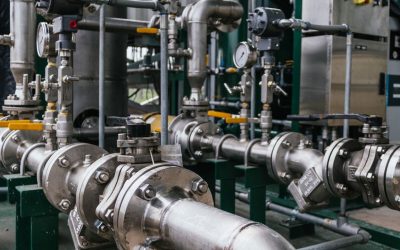Maximizing HVAC Efficiency: Key Maintenance Strategies for 2024
As HVAC systems play a critical role in maintaining comfortable indoor environments across residential and commercial spaces, ensuring optimal efficiency in 2024 is more crucial than ever. With rising energy costs and a growing emphasis on sustainability, proper HVAC maintenance can significantly reduce operational expenses, extend system lifespan, and enhance overall performance. This article outlines the essential steps and strategies within the HVAC division to ensure maximum efficiency, focusing on practical tips, industry insights, and real-world examples.
Table of Contents
- Understanding HVAC Efficiency
- Key Maintenance Strategies for 2024
- Seasonal HVAC Maintenance: Why It’s Essential
- Leveraging Smart Technology for HVAC Maintenance
- Real-World Examples: Improving HVAC Efficiency
- Actionable Tips for Homeowners and Businesses
- Conclusion
1. Understanding HVAC Efficiency
HVAC (Heating, Ventilation, and Air Conditioning) efficiency refers to the system’s ability to maintain desired temperatures with minimal energy consumption. Efficient systems not only provide optimal indoor air quality but also lower energy bills, making them an essential part of any home or business. Achieving high efficiency depends on regular maintenance, upgrading components, and monitoring system performance.
Key Factors Affecting Efficiency:
- Energy Source: HVAC systems powered by renewable energy are generally more efficient.
- System Age: Older systems tend to lose efficiency over time and may require frequent repairs.
- Insulation: Proper insulation ensures the HVAC system doesn’t have to work overtime to regulate indoor temperatures.
2. Key Maintenance Strategies for 2024
To maximize HVAC efficiency, homeowners and businesses must implement regular maintenance protocols, especially in 2024 as energy regulations evolve and system designs become more complex. Key maintenance strategies include:
1. Regular Filter Replacements:
Dirty filters restrict airflow, forcing the system to work harder, increasing energy consumption. Replace or clean filters every 1 to 3 months depending on usage.
2. Annual HVAC Inspections:
Engage a licensed HVAC technician to inspect the system annually. Technicians can spot inefficiencies early and recommend necessary repairs or upgrades.
3. Duct Sealing:
Leaky ducts can cause significant energy loss. Proper sealing of ducts ensures that conditioned air is delivered efficiently, reducing the system’s workload.
4. Calibrate Thermostats:
Accurately calibrated thermostats ensure the system maintains desired temperatures without consuming excess energy. Smart thermostats can automate this process for increased accuracy.
3. Seasonal HVAC Maintenance: Why It’s Essential
Seasonal maintenance ensures the HVAC system operates smoothly throughout the year. Each season presents unique challenges for HVAC systems, requiring tailored maintenance approaches.
Spring and Summer Maintenance:
During warmer months, air conditioners are heavily used. Ensure that outdoor condenser units are free from debris, clean the evaporator coils, and check refrigerant levels.
Fall and Winter Maintenance:
Heating systems take the spotlight during colder months. Inspect the furnace for cracks, lubricate all moving parts, and test carbon monoxide detectors to ensure safe operation.
4. Leveraging Smart Technology for HVAC Maintenance
In 2024, smart HVAC systems are transforming how we approach maintenance. IoT (Internet of Things) integration allows for real-time monitoring, predictive maintenance, and remote control, which enhance efficiency and convenience.
Smart Technology Benefits:
- Remote Monitoring: Track system performance and identify issues before they escalate, preventing expensive repairs.
- Predictive Maintenance: Use smart sensors to detect potential problems, ensuring timely intervention.
- Energy Management: Smart thermostats and sensors can automatically adjust HVAC settings based on occupancy, reducing energy consumption.
5. Real-World Examples: Improving HVAC Efficiency
Several businesses and homeowners in the USA have already benefited from proactive HVAC maintenance. Below are two real-world examples of how regular maintenance has improved system efficiency:
Example 1: A Commercial Office Building in Texas
After implementing a strict HVAC maintenance schedule that included duct cleaning, bi-annual inspections, and smart thermostat installations, this building saw a 20% reduction in energy costs within the first year.
Example 2: A Residential Home in California
A homeowner upgraded their aging HVAC system with a high-efficiency model, added solar panels, and implemented regular filter changes. As a result, the household’s energy bills dropped by 30%, and indoor comfort improved significantly.
6. Actionable Tips for Homeowners and Businesses
If you’re looking to maximize HVAC efficiency, here are some actionable tips to consider:
For Homeowners:
- Upgrade to Smart Thermostats: Automatically adjust your home’s temperature and save on energy costs.
- Schedule Regular Maintenance: Don’t wait for breakdowns—routine maintenance ensures your system operates smoothly.
- Improve Insulation: Adequate insulation keeps conditioned air inside, reducing the strain on your HVAC system.
For Businesses:
- Invest in Energy-Efficient HVAC Systems: Commercial properties can save substantial amounts by upgrading to high-efficiency systems.
- Conduct Energy Audits: Regular audits can identify energy inefficiencies in the HVAC system, allowing for targeted improvements.
- Implement Zoning Systems: For large buildings, consider HVAC zoning to control temperatures in different areas more efficiently.
7. Conclusion
Maximizing HVAC efficiency in 2024 is essential for reducing energy consumption, lowering costs, and maintaining optimal indoor environments. By following key maintenance strategies such as regular filter replacements, annual inspections, and leveraging smart technology, homeowners and businesses can ensure their systems operate at peak performance. Adopting these best practices not only improves comfort but also contributes to a more sustainable and cost-effective future.




0 Comments